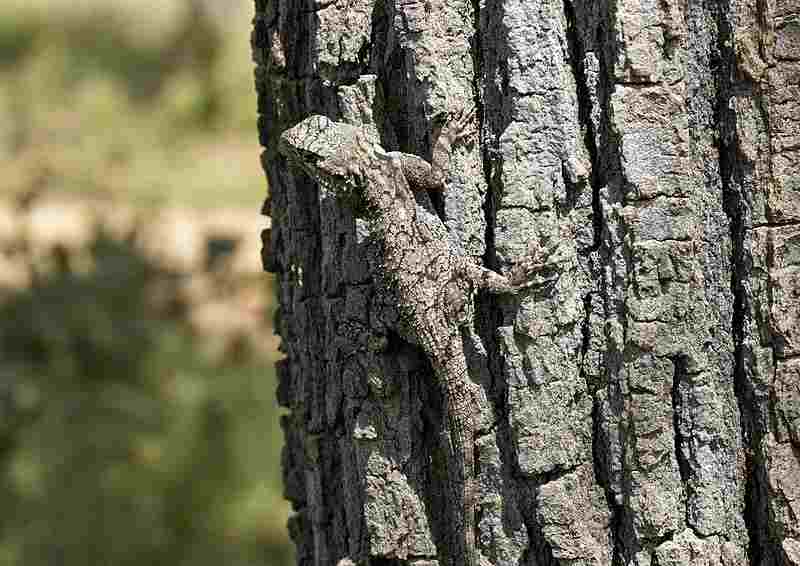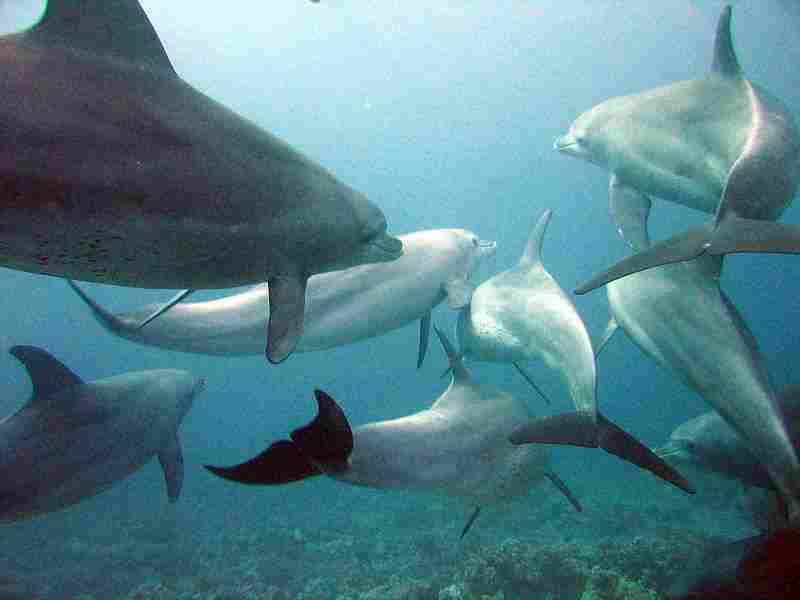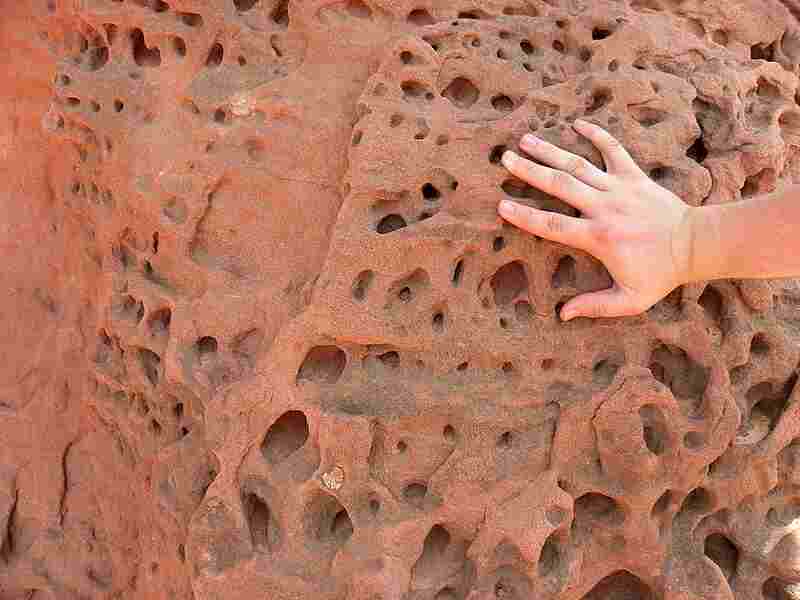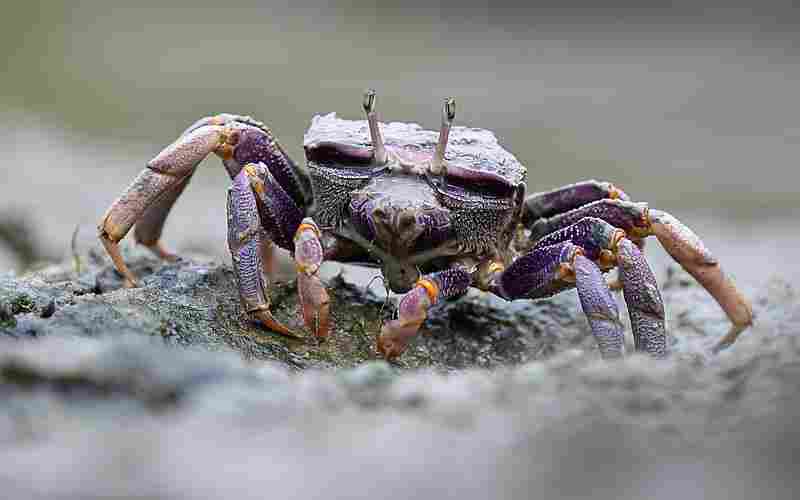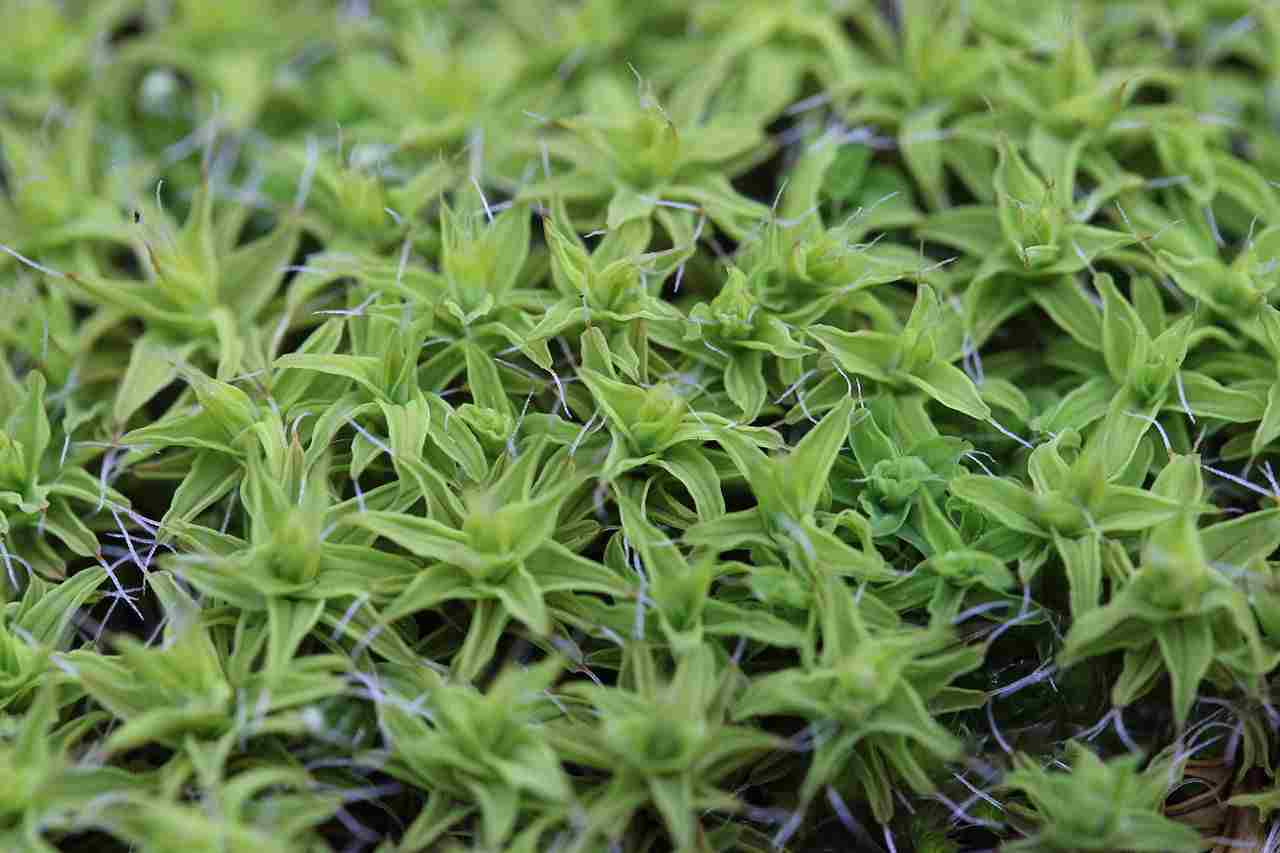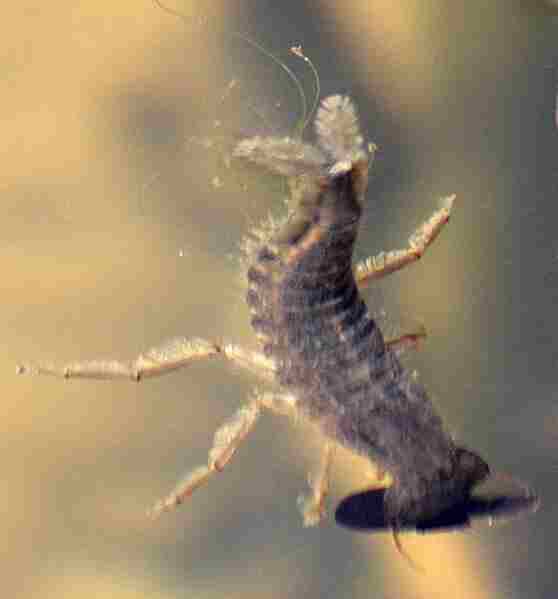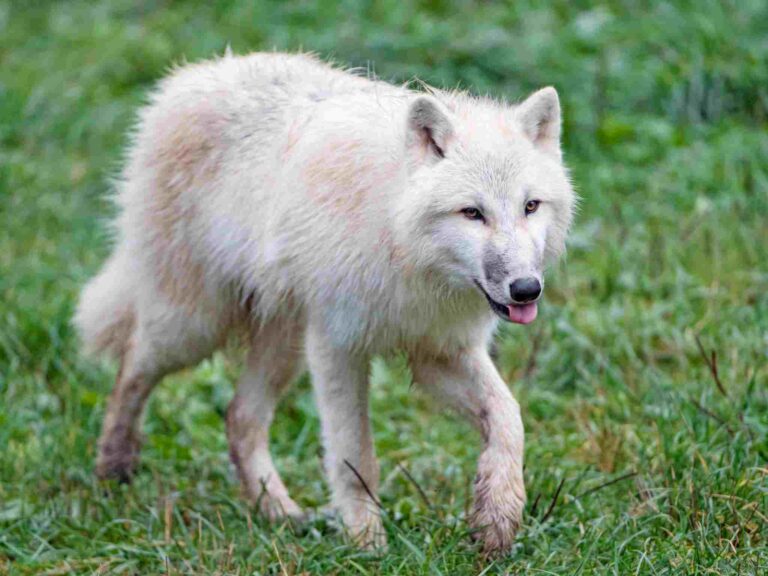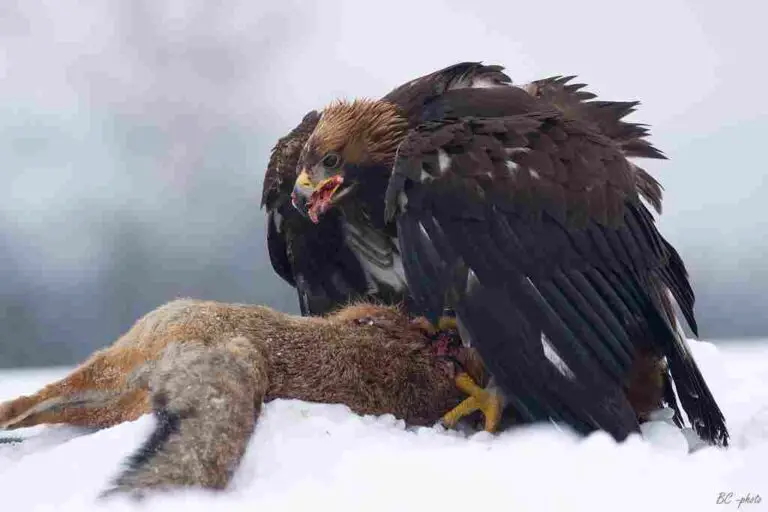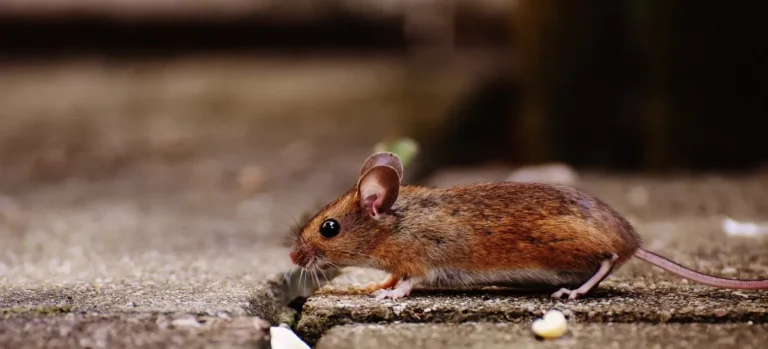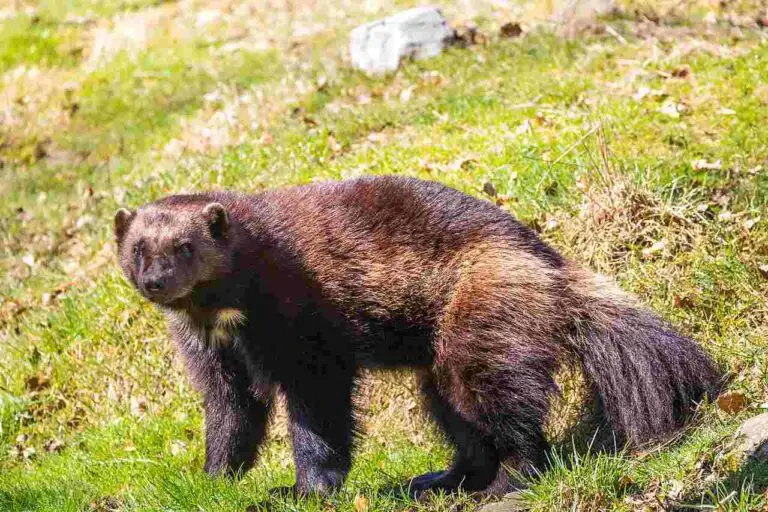17+ Biotic and Abiotic Factors in Yellowstone National Park
Biotic factors in Yellowstone National Park are; producers, herbivores, carnivores, omnivores, decomposers, mutualism, commensalism, predation, parasitism, competition and adaptation.
Abiotic factors in Yellowstone National Park are; sunlight, water, soil, rocks, wind, nutrients, and physiochemical parameters/conditions.
Biotic Factors in Yellowstone National Park
Biotic factors in Yellowstone National Park are; producers, herbivores, carnivores, omnivores, decomposers, mutualism, commensalism, predation, parasitism, competition and adaptation.
1). Producers
Producers play a vital role in the Yellowstone National Park ecosystem. These organisms, such as plants and algae, are able to convert sunlight into energy through the process of photosynthesis. In Yellowstone, some of the common plant species include whitebark pine, white spruce, Douglas-fir, lodgepole pine, lupine, larkspur, and phlox. These plants provide the foundation for the entire food chain in the park.
One of the main functions of producers is to capture sunlight and convert it into chemical energy. This energy is then stored in the form of carbohydrates, which can be used by other organisms in the ecosystem. For example, herbivores like elk and bison rely on the plants in Yellowstone for their source of food. These animals graze on the grasses and browse on the shrubs and trees, obtaining the energy they need to survive.
Producers also play a crucial role in maintaining the balance of oxygen and carbon dioxide in the atmosphere. Through photosynthesis, plants take in carbon dioxide and release oxygen as a byproduct. This process helps to regulate the levels of these gases in the environment, ensuring a healthy atmosphere for all organisms.
In addition to providing food and oxygen, producers also contribute to the overall biodiversity of Yellowstone National Park. The different plant species found in the park create a variety of habitats and niches for other organisms. For example, the whitebark pine trees provide important food sources for animals like grizzly bears and Clark’s nutcrackers. These animals rely on the seeds of the whitebark pine as a key part of their diet.
In aquatic ecosystems within Yellowstone, there are also autotrophs known as cyanobacteria, dinoflagellates, coccolithophores, and some red algae like Cyanidiales. These organisms are responsible for primary production in the water, converting sunlight into energy and providing food for other organisms in the aquatic food chain.
Overall, producers are essential for the functioning of the Yellowstone National Park ecosystem. They provide food, oxygen, and habitat for a wide range of organisms. Without these autotrophs, the entire food chain and ecosystem would collapse. It is important to protect and preserve these vital organisms to ensure the continued health and biodiversity of Yellowstone National Park.
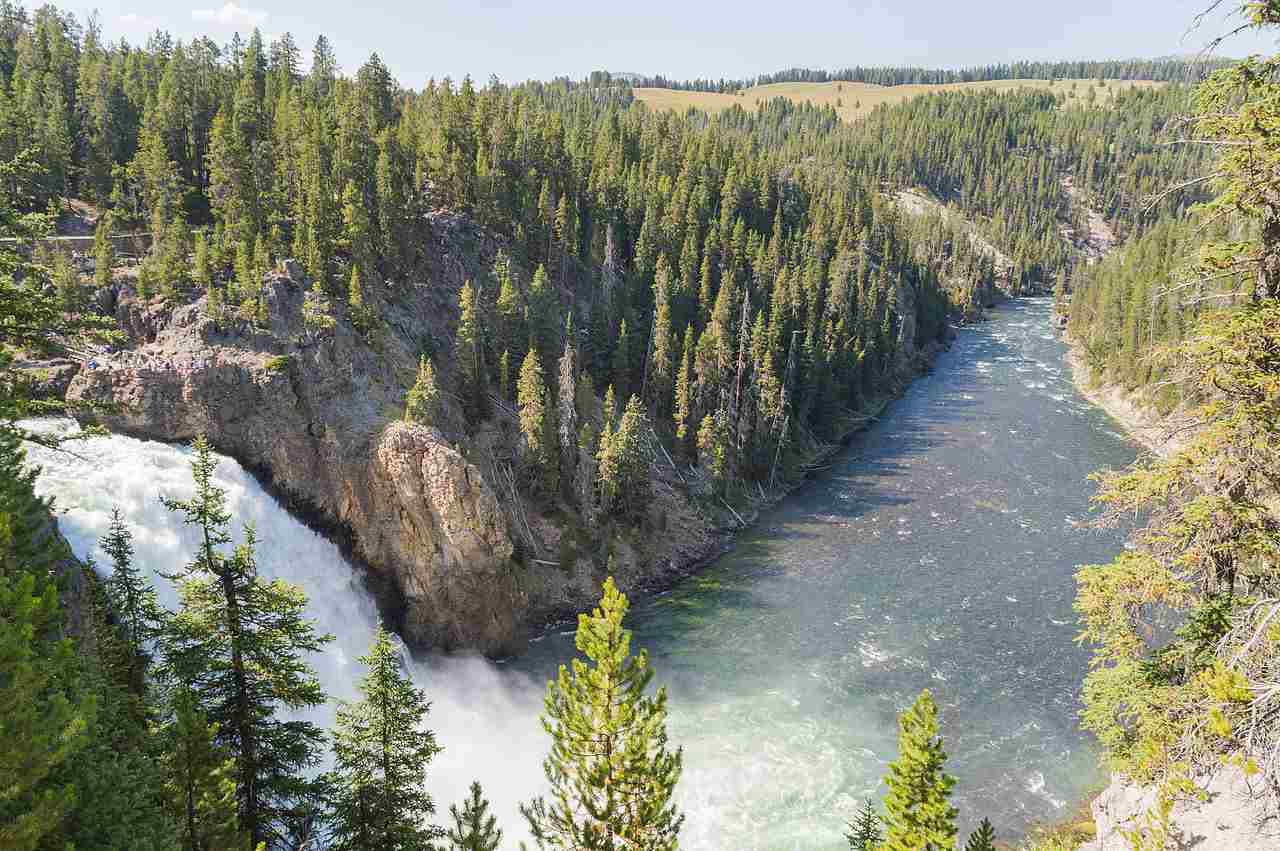
2). Herbivores
Herbivores in Yellowstone National Park play a crucial role in the ecosystem. Elk, American bison, moose, bighorn sheep, grasshoppers, and rabbits are some of the herbivores found in the park.
These animals have an important function in maintaining the balance of the ecosystem by consuming plants and controlling their growth. They also serve as a food source for carnivores, such as wolves and cougars, which helps to regulate the population of both herbivores and plants. Herbivores are essential for the overall health and functioning of Yellowstone National Park.
3). Carnivores
Carnivores in Yellowstone National Park are vital components of the ecosystem, playing crucial roles in maintaining the balance and health of the environment. Wolves, cougars, bobcats, and lynx are some of the carnivores found in the park.
These carnivores have important functions in the ecosystem. For instance, wolves are apex predators and play a key role in regulating the population of herbivores such as elk and bison. By preying on weaker individuals, wolves help to maintain the overall health and genetic diversity of the herbivore population. This, in turn, has a cascading effect on the vegetation, as it prevents overgrazing and allows for the growth and regeneration of plant species.
Cougars, also known as mountain lions, are another important carnivore in Yellowstone National Park. They primarily prey on deer and elk, helping to control their population and prevent overbrowsing. By doing so, cougars indirectly contribute to the health and diversity of the plant community. Additionally, cougars scavenge on carcasses left behind by other predators, further aiding in the decomposition process and nutrient cycling.
Bobcats and lynx are smaller carnivores that play a role in controlling rodent populations. These feline predators help to keep the numbers of mice, voles, and rabbits in check, which can have significant impacts on the vegetation. By reducing the abundance of herbivorous rodents, bobcats and lynx indirectly contribute to the overall health and balance of the ecosystem.
The presence of carnivores in Yellowstone National Park also has important ecological and conservation implications. The reintroduction of wolves in the 1990s, for example, has led to a trophic cascade, where the presence of wolves has influenced the behavior and distribution of herbivores, which in turn has affected the vegetation and even the physical landscape of the park. This demonstrates the interconnectedness of species and the importance of maintaining a balanced predator-prey relationship.
Therefore, carnivores such as wolves, cougars, bobcats, and lynx play crucial roles in the Yellowstone National Park ecosystem. They help regulate herbivore populations, prevent overgrazing, aid in nutrient cycling, and contribute to the overall health and diversity of the environment. The presence of these carnivores highlights the intricate web of interactions within the park and underscores the importance of conserving and protecting these species for the long-term sustainability of the ecosystem.
4). Omnivores
Omnivores in Yellowstone National Park, such as badgers, coyotes, grizzly bears, and black bears, play a crucial role in the ecosystem by consuming both plant matter and animal prey. These versatile eaters have unique functions that contribute to the overall health and balance of the park’s environment.
Badgers, for example, are opportunistic omnivores that feed on a variety of food sources. They consume small mammals, such as ground squirrels and voles, as well as insects, reptiles, and even plant matter like fruits and seeds. By controlling the population of small mammals, badgers help to maintain the balance of the ecosystem. Additionally, their digging behavior contributes to soil aeration and nutrient cycling, benefiting plant growth.
Coyotes are another important omnivore in Yellowstone National Park. They have a diverse diet that includes small mammals, birds, reptiles, insects, fruits, and even carrion. As scavengers, they play a vital role in the decomposition process by consuming carcasses and aiding in nutrient recycling. Coyotes also help control populations of small mammals, which can have significant impacts on vegetation and other wildlife.
Grizzly bears, one of the most iconic species in the park, are omnivorous and have a varied diet. They consume a wide range of food, including berries, nuts, roots, insects, fish, and even larger mammals like elk and bison. Grizzly bears are important seed dispersers, as they consume fruits and disperse the seeds through their scat. This helps to promote plant diversity and regeneration in the park. Additionally, their feeding habits can shape the landscape by creating meadows and clearings through their foraging activities.
Black bears, like grizzly bears, are also omnivorous and have a diverse diet. They consume a variety of plant matter, including berries, nuts, and grasses, as well as insects, small mammals, and carrion. Black bears are excellent climbers and can access food sources that other animals cannot reach. Their foraging behavior can have an impact on tree regeneration and plant community composition.
The presence of omnivores in Yellowstone National Park is essential for maintaining a balanced and healthy ecosystem. By consuming both plant matter and animal prey, omnivores contribute to nutrient cycling, seed dispersal, and population control. Their feeding habits and behaviors have far-reaching effects on the park’s vegetation, wildlife, and overall landscape.
Drawing from the discussion so far, omnivores such as badgers, coyotes, grizzly bears, and black bears are vital components of the Yellowstone National Park ecosystem. Their diverse diets and feeding behaviors contribute to the overall health and balance of the environment.
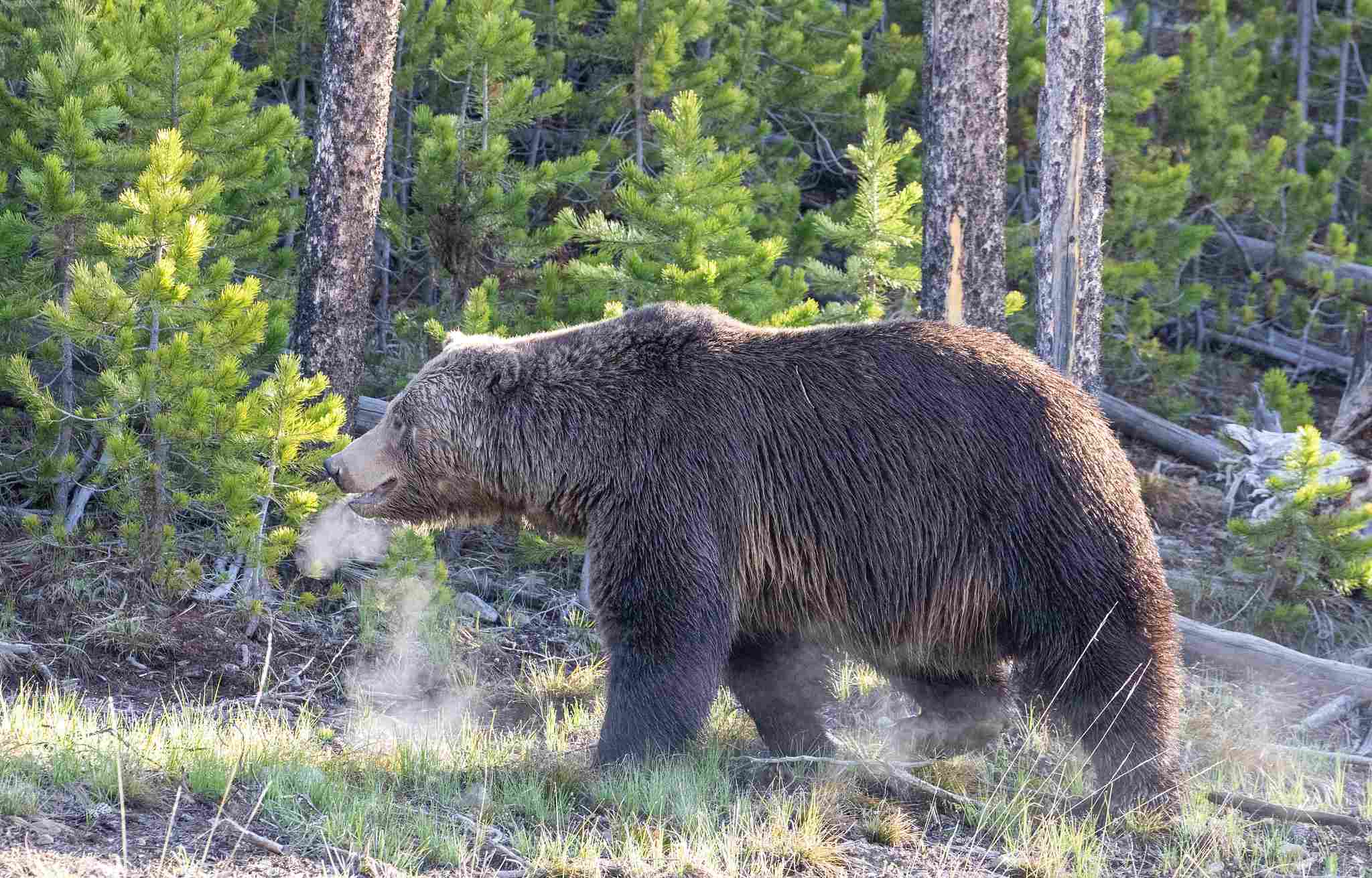
5). Decomposers
Decomposers play a crucial role in the Yellowstone National Park ecosystem. They include bacteria, fungi (including mushrooms), and detritivores like termites, crickets, and earthworms. These organisms are responsible for breaking down dead organic matter, such as fallen leaves, animal carcasses, and plant debris.
Bacteria are microscopic decomposers that break down organic matter into simpler compounds through a process called decomposition. They play a vital role in nutrient recycling by converting complex organic molecules into forms that can be used by other organisms. For example, bacteria break down dead plants and animals, releasing nutrients like nitrogen and phosphorus back into the soil, which can then be taken up by plants.
Fungi, including mushrooms, are another important group of decomposers in Yellowstone National Park. They have the ability to break down tough organic materials, such as wood and plant fibers, that other organisms cannot digest. Fungi secrete enzymes that break down complex organic compounds into simpler forms, which they then absorb as nutrients. In the process, fungi help to release carbon, nitrogen, and other essential elements back into the ecosystem.
Detritivores, such as termites, crickets, and earthworms, also contribute to decomposition in the park. These organisms feed on dead plant and animal matter, breaking it down into smaller pieces. Termites, for example, consume wood and plant debris, helping to break it down and accelerate the decomposition process. Crickets and earthworms feed on decaying organic matter, further breaking it down and aiding in nutrient cycling.
The functions of decomposers in the Yellowstone National Park ecosystem are vital. They help to break down dead organic matter, releasing nutrients back into the soil and making them available for other organisms. Decomposers also play a role in disease control by breaking down dead organisms and preventing the spread of pathogens. Additionally, they contribute to soil formation and fertility by breaking down organic matter and improving soil structure.
One example of the importance of decomposers in Yellowstone National Park is the role of fungi in the decay of fallen trees. When a tree dies and falls to the ground, fungi begin the process of decomposition by breaking down the wood. This process releases nutrients back into the soil, which can then be used by other plants. Without decomposers like fungi, dead organic matter would accumulate, and nutrients would become locked away, limiting the growth of new plants.
Generally, decomposers such as bacteria, fungi, and detritivores are essential components of the Yellowstone National Park ecosystem. They play a crucial role in breaking down dead organic matter, releasing nutrients back into the soil, and contributing to the overall health and balance of the environment.
6). Mutualism
Mutualism is a type of symbiotic relationship in which both species involved benefit from the interaction. In Yellowstone National Park, there are several examples of mutualistic relationships that play important roles in the ecosystem.
One example of mutualism in Yellowstone is the relationship between ravens and wolves. Ravens are known to follow wolf packs, scavenging on the remains of their kills. This benefits the ravens by providing them with a reliable source of food. In return, the ravens provide a service to the wolves by acting as sentinels, alerting them to the presence of potential threats. This mutualistic relationship helps both species thrive in the park.
Another example of mutualism in Yellowstone involves mycorrhizal fungi and plants. Mycorrhizal fungi form a symbiotic relationship with the roots of plants, in which the fungi provide the plants with nutrients, such as phosphorus and nitrogen, while the plants provide the fungi with carbohydrates. This mutualistic relationship is crucial for the survival and growth of many plant species in the park, as it enhances their ability to absorb nutrients from the soil.
The whitebark pine and Clark’s nutcracker also have a mutualistic relationship in Yellowstone. The whitebark pine produces large, nutritious seeds that are an important food source for the nutcracker. The nutcracker, in turn, plays a vital role in the dispersal of whitebark pine seeds. It collects and caches the seeds in various locations, often burying them in the ground. Some of these seeds are forgotten or left behind, allowing them to germinate and grow into new whitebark pine trees. This mutualistic relationship helps to ensure the survival and regeneration of the whitebark pine population in the park.
Mutualism is also observed between various angiosperms and their pollinators in Yellowstone. Bees, butterflies, hummingbirds, and other pollinators visit flowers to feed on nectar and, in the process, transfer pollen from one flower to another. This mutualistic relationship benefits both the plants and the pollinators. The plants receive pollination, which is necessary for reproduction, while the pollinators obtain food in the form of nectar. This mutualistic relationship is essential for the maintenance of plant diversity and the production of fruits and seeds in the park.
Lastly, there is a mutualistic relationship between the cowbird and bison in Yellowstone. Cowbirds are known to follow bison herds, feeding on insects that are disturbed by the movement of the bison. This benefits the cowbirds by providing them with a source of food. In return, the cowbirds help to control the insect population around the bison, reducing the risk of disease transmission. This mutualistic relationship contributes to the overall health and well-being of the bison population in the park.
Therefore, mutualism plays a significant role in the Yellowstone National Park ecosystem. The relationships between ravens and wolves, mycorrhizal fungi and plants, whitebark pine and Clark’s nutcracker, various angiosperms and pollinators, and cowbird and bison are all examples of mutualistic interactions that benefit both species involved.
7). Commensalism
Commensalism is a type of symbiotic relationship in which one species benefits while the other is neither harmed nor benefited. In Yellowstone National Park, there are several examples of commensalism that contribute to the functioning of the ecosystem.
One example of commensalism in Yellowstone involves birds and the trees in which they nest. Birds build their nests in the branches of trees, using the trees as a secure place to lay their eggs and raise their young. The trees, on the other hand, are not directly affected by the presence of the birds. This relationship benefits the birds by providing them with a safe and elevated location for nesting, while the trees are unaffected.
Another example of commensalism in Yellowstone is the relationship between elk and birds. Elk often disturb insects while foraging or moving through the grasslands. This disturbance attracts birds, such as black-billed magpies and American robins, which feed on the insects. The birds benefit from the easy access to food, while the elk are not affected by their presence.
In addition, commensalism can be observed between bison and birds in Yellowstone. Bison create depressions in the ground, known as wallows, by rolling and rubbing their bodies against the soil. These wallows provide a moist and nutrient-rich environment, attracting insects and other invertebrates. Birds, such as red-winged blackbirds and meadowlarks, take advantage of this food source by foraging for insects in and around the wallows. The birds benefit from the abundance of insects, while the bison are not impacted by their presence.
Commensalism plays a role in the Yellowstone National Park ecosystem by providing additional food sources for certain bird species and contributing to the overall biodiversity of the park. The relationships between birds and trees, elk and birds, and bison and birds are all examples of commensal interactions that demonstrate how different species can coexist and benefit from each other in the park.
8). Predation
Predation is a fundamental ecological interaction in Yellowstone National Park, where various species rely on hunting and feeding on other organisms for survival. This section will explore the role of predation in the park’s ecosystem and provide factual examples of predator-prey relationships.
One prominent example of predation in Yellowstone involves wolves and bison. Wolves are apex predators in the park and play a crucial role in regulating the population of bison. They prey on weakened or vulnerable individuals, such as calves or older individuals, helping to maintain a healthy balance within the bison population. This predation also ensures that the bison do not overgraze the vegetation, allowing for the regeneration of plant species and the overall health of the ecosystem.
Another predator-prey relationship in Yellowstone is between cougars and elks. Cougars, also known as mountain lions, are skilled hunters that primarily target elks as their main source of food. By preying on elks, cougars help control their population and prevent overgrazing, which can have detrimental effects on the vegetation and other herbivores in the park. This predation also selects for stronger and more agile elks, contributing to the overall fitness of the population.
Bobcats, small and elusive predators, play a role in controlling the population of rabbits in Yellowstone. These agile hunters rely on their stealth and sharp hunting skills to capture rabbits as their primary prey. By preying on rabbits, bobcats help regulate their population and prevent excessive damage to vegetation caused by overgrazing. This predator-prey relationship ensures a balance between the rabbit population and their available food sources.
Predation is not limited to mammals in Yellowstone; it also occurs between different aquatic organisms. Dragonfly larvae, for example, prey on tadpoles in the park’s ponds and lakes. Dragonfly larvae are voracious predators that use their specialized mouthparts to capture and consume tadpoles. This predation helps control the population of tadpoles, preventing overcrowding and ensuring the survival of other aquatic organisms in the ecosystem.
In general, predation plays a vital role in maintaining the balance and functioning of the Yellowstone National Park ecosystem. It helps regulate populations, control herbivory, and promote the overall health and diversity of the park’s flora and fauna. The predator-prey relationships between wolves and bison, cougars and elks, bobcats and rabbits, and dragonfly larvae and tadpoles are just a few examples of how predation shapes the dynamics of this unique ecosystem.
9). Parasitism
Parasitism is another important biotic factor in the ecosystem of Yellowstone National Park. It involves a relationship between two organisms, where one organism, known as the parasite, benefits at the expense of the other organism, known as the host. This section will explore the role of parasitism in the park’s ecosystem and provide factual examples of parasitic relationships.
One example of parasitism in Yellowstone involves the parasite Toxoplasma gondii and gray wolves. Toxoplasma gondii is a protozoan parasite that can infect a wide range of warm-blooded animals, including wolves. When wolves consume infected prey, they can become hosts to the parasite. This parasitic relationship can have negative effects on the wolves, as the parasite can cause neurological symptoms and impair their ability to hunt and survive. This example highlights the impact of parasitism on the health and well-being of the park’s top predators.
Another example of parasitism in Yellowstone is the tapeworm infection in American bison. Tapeworms are parasitic flatworms that can infect the intestines of bison. The tapeworms absorb nutrients from the bison’s digestive system, depriving the host of essential nutrients. This parasitic relationship can weaken the bison and make them more susceptible to predation or other diseases. It also demonstrates the intricate interactions between parasites and their hosts in the park’s ecosystem.
Parasitism serves important functions in the Yellowstone National Park ecosystem. It helps regulate population sizes by controlling the numbers of certain species. Parasites can also act as natural selection agents, favoring individuals with genetic resistance to the parasites. This process contributes to the overall fitness and adaptation of the host population.
In addition to the examples mentioned, there are various other parasitic relationships in Yellowstone. These include ticks infesting mammals, such as elk and deer, and causing discomfort and potential disease transmission. Mosquitoes, another common pest (often viewed as an ectoparasite), feed on the blood of various animals, including birds and mammals, and can transmit diseases such as West Nile virus.
Parasitism, like other biotic factors, plays a crucial role in maintaining the balance and functioning of the Yellowstone National Park ecosystem. It influences population dynamics, shapes the genetic composition of species, and contributes to the overall biodiversity of the park. Understanding and studying these parasitic relationships is essential for the conservation and management of the park’s unique ecosystem.
10). Competition
Competition is a significant biotic factor in the ecosystem of Yellowstone National Park. It occurs among various organisms, including plants and predators, and plays a crucial role in shaping the park’s ecosystem dynamics. This section will explore the concept of competition and provide factual examples of competitive interactions within the park.
One form of competition in Yellowstone is the competition among plants for essential resources such as space, water, sunlight, and nutrients. In the park’s diverse habitats, different plant species compete for limited resources to survive and reproduce. This competition can lead to the development of unique adaptations and strategies for resource acquisition. For example, in areas with limited sunlight, plants may grow taller to reach the sunlight, while in areas with limited water, plants may develop deep root systems to access underground water sources. These competitive interactions among plants contribute to the overall biodiversity and functioning of the park’s ecosystem.
Competition also occurs among predators in Yellowstone. For instance, there is competition between wolves and coyotes for prey. Both species rely on similar food sources, such as elk and deer, and compete for limited hunting territories. This competition can influence the distribution and abundance of these predator populations within the park. Similarly, cougars and wolves may compete for similar prey species, and bobcats and lynxes may compete for overlapping territories. These competitive interactions among predators can have cascading effects on the park’s food web and population dynamics.
Competition serves several functions in the Yellowstone National Park ecosystem. Firstly, it helps regulate population sizes by limiting the availability of resources. This competition for resources can lead to the survival of the fittest individuals within a population, as those with advantageous traits are more likely to succeed in acquiring resources and reproducing. Secondly, competition can drive the evolution of adaptations that enhance an organism’s competitive abilities. For example, predators may develop specialized hunting techniques or physical attributes that give them an advantage over their competitors. Lastly, competition contributes to the overall stability and resilience of the ecosystem by preventing the dominance of a single species and promoting species coexistence.
In addition to the examples mentioned, there are various other competitive interactions in Yellowstone. For instance, there is competition among herbivores for limited food resources, such as grazing areas or preferred plant species. This competition can influence the distribution and behavior of herbivore populations within the park. Furthermore, there may be competition among decomposers for organic matter, as they break down dead plant and animal material. These competitive interactions among decomposers contribute to nutrient cycling and the recycling of organic matter in the park’s ecosystem.
Competition, as a biotic factor, plays a vital role in shaping the Yellowstone National Park ecosystem. It influences the distribution, abundance, and behavior of organisms, and contributes to the overall biodiversity and functioning of the park.
11). Adaptation
Adaptation is a crucial aspect of the ecosystem in Yellowstone National Park. It refers to the physical and behavioral changes that organisms undergo to better survive and thrive in their environment. These adaptations can be observed in various species, including both plants and animals, and play a significant role in shaping the park’s ecosystem dynamics.
One example of adaptation in Yellowstone is the fur and camouflage in coyotes and rabbits. These animals have developed specialized fur patterns and colors that help them blend into their surroundings, making it easier for them to hunt or avoid being hunted.
For instance, the coyote’s fur coloration allows it to blend in with the park’s grassy landscapes, while the rabbit’s brown fur helps it hide among the rocks and vegetation. This adaptation enhances their chances of survival by providing them with a natural defense against predators.
Another adaptation seen in Yellowstone is the development of specialized claws, teeth, and keen sensitivity in predators. Predators such as wolves, cougars, and bears have evolved sharp claws and teeth that enable them to efficiently capture and kill their prey. Additionally, these predators have highly developed senses, including acute hearing and smell, which help them locate and track their prey. These adaptations give them a competitive advantage in the park’s ecosystem, allowing them to successfully hunt and secure their food sources.
In terms of herbivores, digestive adaptations are essential for their survival. Yellowstone is home to various herbivorous species, such as elk, deer, and bison, which rely on plant material for their nutrition. These animals have evolved specialized digestive systems that allow them to efficiently break down and extract nutrients from plant matter.
For example, they have multiple stomach compartments and symbiotic bacteria in their digestive tracts that aid in the breakdown of cellulose, a complex carbohydrate found in plants. This adaptation enables herbivores to extract maximum nutrition from their food sources and thrive in the park’s ecosystem.
Adaptations in Yellowstone National Park serve several functions within the ecosystem. Firstly, they enhance an organism’s chances of survival and reproduction by providing them with advantages in their environment. For example, the fur and camouflage adaptations in coyotes and rabbits help them avoid predation and increase their chances of successfully reproducing.
Secondly, adaptations contribute to the overall balance and stability of the ecosystem by promoting species coexistence. Different adaptations allow organisms to occupy different niches within the park, reducing competition for resources and ensuring the survival of multiple species. Lastly, adaptations can drive the evolution of new traits and characteristics over time, leading to the diversification and adaptation of species to changing environmental conditions.
Abiotic Factors in Yellowstone National Park
Abiotic factors in Yellowstone National Park are; sunlight, water, soil, rocks, wind, nutrients, and physiochemical parameters/conditions.
1). Sunlight
Sunlight plays a crucial role in the ecosystem of Yellowstone National Park. It is an essential abiotic factor that provides energy for various biological processes.
One of the primary importance of sunlight in Yellowstone National Park is photosynthesis. Plants in the park use sunlight to convert carbon dioxide and water into glucose and oxygen. This process not only provides energy for the plants themselves but also serves as the foundation of the food chain. Herbivores, such as elk and bison, consume these plants, while carnivores, like wolves and bears, feed on the herbivores. Without sunlight, photosynthesis would not occur, disrupting the entire ecosystem.
Sunlight also influences the temperature in Yellowstone National Park. The amount of sunlight received affects the overall climate and weather patterns. It determines the length and intensity of the growing season, which in turn affects the availability of food and habitat for wildlife. Sunlight also plays a role in regulating the temperature of bodies of water, such as rivers and lakes, which are vital for aquatic organisms.
In addition to its role in photosynthesis and temperature regulation, sunlight also affects the behavior and activity patterns of animals in Yellowstone National Park. Many species rely on sunlight as a cue for daily activities, such as foraging, mating, and migration. For example, certain bird species migrate based on the changing patterns of sunlight throughout the year. Sunlight also influences the diurnal and nocturnal behavior of animals, as some species are more active during the day while others are more active at night.
Furthermore, sunlight contributes to the overall aesthetic beauty of Yellowstone National Park. The interplay of sunlight with the park’s diverse landscapes, including geysers, canyons, and forests, creates stunning visual displays. Sunlight illuminates the vibrant colors of the park’s flora and fauna, making it a captivating sight for visitors.
2). Water
Water is a vital abiotic factor in the ecosystem of Yellowstone National Park. It plays a crucial role in supporting the diverse plant and animal life found within the park.
One of the primary sources of water in Yellowstone National Park is precipitation. Rainfall and snowfall provide the necessary moisture for plants to grow and thrive. The water from precipitation seeps into the ground, replenishing underground water sources such as aquifers and springs. These sources of water are essential for the survival of various organisms, including plants, insects, and mammals.
Water also plays a critical role in the aquatic ecosystems of Yellowstone National Park. The park is home to numerous rivers, streams, and lakes, which provide habitats for a wide range of aquatic organisms. These bodies of water support fish species such as cutthroat trout and grayling, as well as amphibians like frogs and salamanders. The availability of water in these habitats is crucial for the survival and reproduction of these aquatic species.
In addition to supporting plant and animal life, water in Yellowstone National Park also contributes to the park’s geological features. The park is famous for its geysers, hot springs, and mud pots, which are formed by the interaction of water with the park’s volcanic activity. The geothermal features in Yellowstone National Park are a result of underground water being heated by magma and then released to the surface. These unique geological formations attract millions of visitors each year.
Water also plays a role in regulating the temperature of Yellowstone National Park. Bodies of water, such as lakes and rivers, act as heat sinks, absorbing and releasing heat over time. This helps to moderate the temperature in the surrounding areas, creating a more stable and suitable environment for both plants and animals. The availability of water also helps to cool down the park during hot summer months, providing relief for both wildlife and visitors.
Furthermore, water in Yellowstone National Park supports a variety of recreational activities. Visitors can enjoy activities such as fishing, boating, and swimming in the park’s lakes and rivers. These activities not only provide opportunities for relaxation and enjoyment but also contribute to the local economy through tourism.
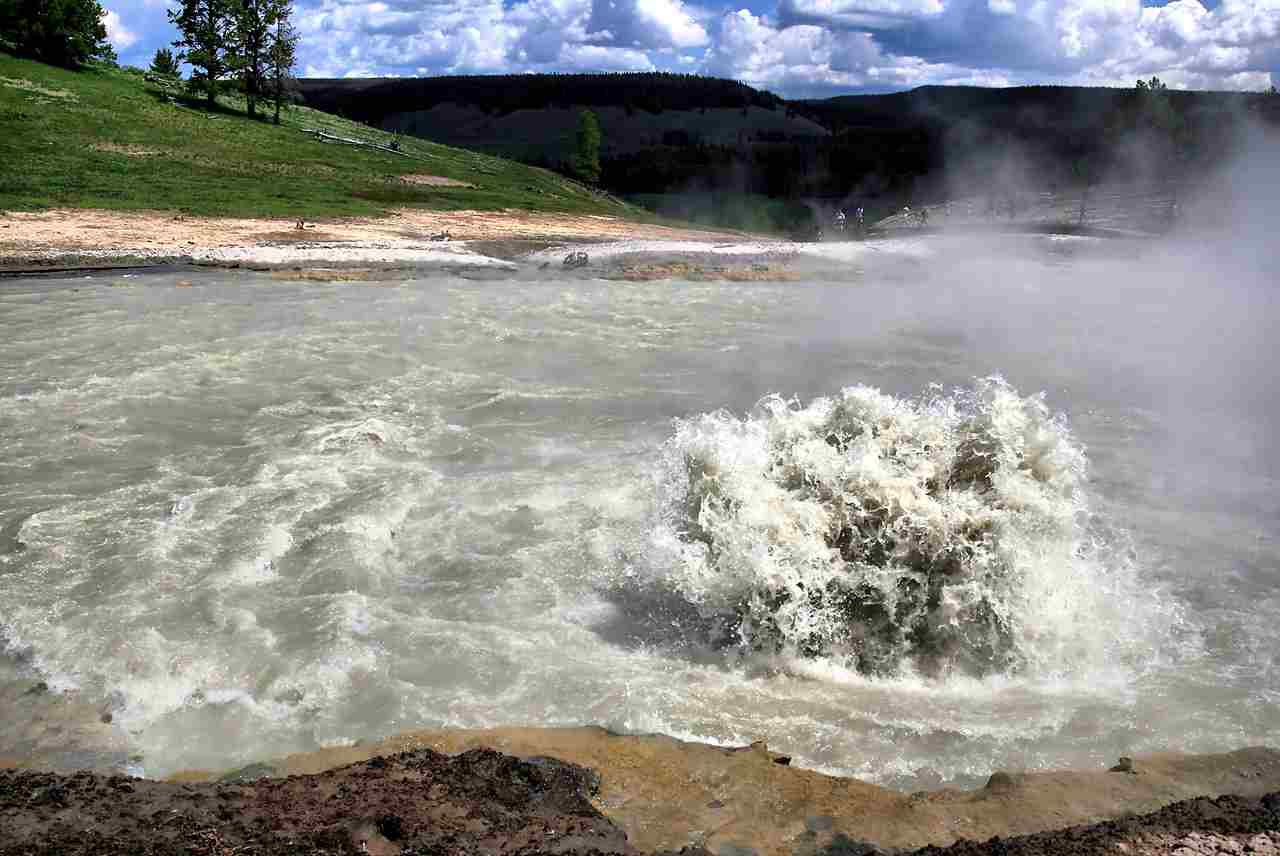
3). Soil
Soil is a crucial abiotic factor in the ecosystem of Yellowstone National Park. It provides a foundation for plant growth and supports a diverse range of organisms within the park.
The soil in Yellowstone National Park consists of different types, including sandy, loamy, and clay soils. Each type has its own characteristics and composition, which influence the plants and animals that can thrive in specific areas. Sandy soil, for example, has larger particles and drains quickly, while clay soil has smaller particles and retains more water.
One of the primary functions of soil in Yellowstone National Park is to provide nutrients to plants. The soil contains essential elements like nitrogen, phosphorus, and potassium, which are necessary for plant growth. These nutrients are obtained by plants through their roots, allowing them to develop and reproduce. Without nutrient-rich soil, the plant life in the park would struggle to survive.
Soil also plays a vital role in supporting the park’s animal life. Many organisms, such as insects and small mammals, rely on soil for shelter and protection. Burrowing animals like ground squirrels and badgers create underground dens in the soil, providing them with a safe habitat. Additionally, soil acts as a filter, purifying water as it percolates through the layers, ensuring a clean water supply for both plants and animals.
Moreover, soil in Yellowstone National Park contributes to the park’s overall ecosystem balance. It helps regulate water flow and prevents erosion by absorbing and retaining water. This prevents excessive runoff and helps maintain the stability of rivers and streams. The soil also acts as a carbon sink, storing carbon dioxide and reducing its impact on the atmosphere.
An example of the importance of soil in Yellowstone National Park can be seen in the growth of lodgepole pine trees. These trees have adapted to the park’s nutrient-poor soil by developing serotinous cones. These cones remain closed until exposed to the high temperatures of a forest fire, which triggers them to open and release their seeds. The fire clears away competing vegetation and enriches the soil with nutrients, allowing the lodgepole pine seeds to germinate and grow.
4). Rocks
Rocks are an essential abiotic factor in the ecosystem of Yellowstone National Park. They play a crucial role in shaping the landscape and providing habitat for various organisms within the park.
There are different types of rocks found in Yellowstone National Park, including igneous, sedimentary, and metamorphic rocks. Each type has its own unique characteristics and functions in the ecosystem. Igneous rocks, for example, are formed from solidified lava or magma and can be found in volcanic areas of the park. These rocks provide a solid foundation for plant growth and serve as a substrate for organisms like lichens and mosses.
Rocks also contribute to the park’s overall biodiversity by creating diverse microhabitats. In Yellowstone National Park, rocks can form crevices, caves, and cliffs, which provide shelter and nesting sites for birds, bats, and small mammals. These rocky habitats offer protection from predators and harsh weather conditions, allowing these organisms to thrive.
Moreover, rocks in Yellowstone National Park play a vital role in the water cycle. They act as natural barriers, directing the flow of water and preventing erosion. Rocks can form natural dams, creating pools and streams that serve as water sources for plants and animals. They also help regulate the temperature of water bodies, providing a suitable environment for aquatic organisms.
An example of the importance of rocks in Yellowstone National Park can be seen in the geothermal features, such as geysers and hot springs. These unique geological formations are a result of the interaction between rocks and underground heat sources. The hot water and steam that erupt from geysers and hot springs create a distinct habitat for thermophilic bacteria and other microorganisms.
In addition to their ecological functions, rocks in Yellowstone National Park also have cultural significance. They hold geological records that provide insights into the park’s history and formation. Geologists study the rocks to understand the processes that have shaped the park over millions of years.
5). Wind
Wind is an important abiotic factor in the ecosystem of Yellowstone National Park. It plays a crucial role in shaping the landscape and influencing various ecological processes within the park.
One of the key functions of wind in Yellowstone National Park is seed dispersal. As the wind blows, it carries seeds from plants and disperses them over long distances. This helps in the colonization of new areas and promotes genetic diversity within plant populations. For example, the wind disperses the seeds of lodgepole pine trees, allowing them to establish in different parts of the park and contribute to the forest ecosystem.
In addition to seed dispersal, wind also affects the distribution of moisture in the park. It can accelerate the evaporation of water from the soil and vegetation, leading to drier conditions in certain areas. This influences the types of plants that can grow in different habitats, as some species are more adapted to drier conditions than others. The wind also plays a role in the movement of water bodies, such as lakes and rivers, by creating waves and currents.
Furthermore, wind influences the behavior and movement of animals in Yellowstone National Park. It can affect the flight patterns of birds, making it easier or more challenging for them to navigate through the air. Some bird species, like the American kestrel, take advantage of the wind currents to soar and conserve energy during migration. Wind also impacts the foraging behavior of animals by dispersing scents and carrying sounds, which can alert or attract predators and prey.
The strong winds in Yellowstone National Park also contribute to the formation of unique geological features. Over time, wind erosion has sculpted the landscape, creating fascinating rock formations, such as arches and hoodoos. These geological formations serve as tourist attractions and provide insights into the park’s geological history.
6). Nutrients
Nutrients are essential for the functioning of the ecosystem in Yellowstone National Park. They play a crucial role in supporting the growth and survival of plants and animals, as well as the overall balance of the ecosystem.
One of the primary functions of nutrients in Yellowstone National Park is to provide energy and building blocks for living organisms. Plants, for example, require nutrients such as nitrogen, phosphorus, and potassium to carry out photosynthesis and produce food. These nutrients are absorbed from the soil through the roots and used to synthesize carbohydrates, proteins, and other essential compounds. In turn, herbivores consume these plants to obtain the necessary nutrients for their own growth and development.
Moreover, nutrients also contribute to the nutrient cycling within the ecosystem. When plants and animals die, their organic matter decomposes, releasing nutrients back into the soil. This process, known as decomposition, is facilitated by decomposers such as bacteria and fungi. The nutrients released during decomposition are then available for uptake by plants, completing the nutrient cycle. For instance, the decomposition of fallen leaves in Yellowstone National Park replenishes the soil with nutrients, ensuring the continuous growth of vegetation.
In addition to supporting the growth of plants and animals, nutrients also influence the distribution and abundance of species within the park. Different species have varying nutrient requirements, and the availability of specific nutrients can determine which species can thrive in a particular habitat. For example, certain plants may be adapted to nutrient-poor soils and can outcompete other species in such environments. This can lead to the formation of unique plant communities and contribute to the overall biodiversity of Yellowstone National Park.
Furthermore, nutrients play a crucial role in maintaining the health and productivity of aquatic ecosystems in the park. Nutrient-rich waters support the growth of algae and other aquatic plants, which form the base of the food chain. These primary producers provide food and habitat for a variety of organisms, including fish and invertebrates. In turn, these organisms serve as prey for larger predators, creating a complex web of interactions. For instance, the availability of nutrients in Yellowstone’s rivers and lakes influences the abundance of fish species such as cutthroat trout and grayling.
7). Physiochemical Parameters/Conditions
Physiochemical parameters and conditions are important factors that influence the functioning of the ecosystem in Yellowstone National Park. These parameters refer to the physical and chemical characteristics of the environment, which play a crucial role in shaping the habitat and determining the distribution of organisms.
One physiochemical parameter that significantly impacts the ecosystem is temperature. Yellowstone National Park experiences a wide range of temperatures throughout the year, from freezing cold winters to hot summers. This variation in temperature affects the behavior and physiology of plants and animals. For example, certain plant species have adapted to the cold temperatures by developing mechanisms to protect their tissues from freezing. Animals, on the other hand, may hibernate during the winter months to conserve energy and survive the harsh conditions.
Another important physiochemical parameter is pH, which measures the acidity or alkalinity of the soil and water. Different organisms have specific pH requirements for optimal growth and survival. In Yellowstone National Park, the geothermal activity contributes to the presence of hot springs and geysers, which often have high levels of acidity. These extreme conditions create unique habitats that support specialized microbial communities adapted to thrive in acidic environments.
Water availability is also a critical physiochemical condition in Yellowstone National Park. The park is home to numerous rivers, lakes, and streams, which provide essential water resources for plants and animals. The availability of water influences the distribution and abundance of species, as well as their behavior and reproductive patterns. For instance, during the dry summer months, certain plant species may go dormant or reduce their water loss through adaptations such as waxy leaf coatings or deep root systems.
Furthermore, the nutrient composition of the soil and water is an important physiochemical parameter that affects the ecosystem in Yellowstone National Park. Different nutrients, such as nitrogen, phosphorus, and potassium, are essential for the growth and development of plants. The availability of these nutrients can vary across different habitats within the park, leading to variations in plant communities and the types of animals that rely on them for food and shelter.
Lastly, the presence of pollutants and contaminants in the environment can have detrimental effects on the ecosystem. Yellowstone National Park is known for its pristine landscapes, but human activities outside the park can still impact the park’s air and water quality. Pollution from nearby industrial areas or agricultural practices can introduce harmful substances into the ecosystem, affecting the health and survival of plants, animals, and microorganisms.
FAQs
1. What is Mutualism for in Yellowstone National Park?
Mutualism plays a crucial role in the continuity of organic life in Yellowstone National Park. This symbiotic relationship between different organisms is essential for their survival.
One example of mutualism in Yellowstone National Park is the relationship between bees and flowers. Bees rely on flowers for nectar and pollen, which they use as a food source. In return, bees help in the pollination process by transferring pollen from one flower to another, allowing plants to reproduce. This mutualistic relationship benefits both the bees and the flowers, ensuring the survival of both species.
Another example of mutualism in the park is the relationship between bison and birds. Bison create disturbances in the soil as they graze, which exposes insects and other invertebrates. Birds, such as the black-billed magpie, follow the bison and feed on these exposed insects. In this mutualistic relationship, the birds get a source of food, while the bison benefit from the removal of parasites and insects from their bodies.
Mutualism is vital for the overall health and balance of the ecosystem in Yellowstone National Park. It promotes biodiversity and ensures the survival of different species by providing them with essential resources and services. Without mutualistic relationships, the ecosystem would be disrupted, leading to negative impacts on the park’s flora and fauna.
2. What is the Parasitism in Yellowstone National Park?
Parasitism is another important ecological relationship that can be found in Yellowstone National Park. This type of relationship occurs when one organism, known as the parasite, benefits at the expense of another organism, known as the host.
One example of parasitism in Yellowstone National Park is the relationship between wolves and their prey, such as elk and deer. Wolves rely on these herbivores as their main source of food. They hunt and kill the prey animals, feeding on their flesh and organs. In this relationship, the wolves are the parasites, as they benefit from the nutrients obtained from the prey animals. On the other hand, the prey animals are the hosts, as they are harmed and ultimately killed by the wolves.
Another example of parasitism in the park is the relationship between ticks and mammals. Ticks are ectoparasites that attach themselves to the skin of mammals, including elk, deer, and bison. They feed on the blood of their hosts, causing irritation and potential health issues. While the ticks benefit from the blood meal, the mammals are harmed by the presence of the parasites.
Parasitism plays a crucial role in maintaining the balance of the ecosystem in Yellowstone National Park. It helps regulate the population of certain species and ensures the survival of others. While parasitic relationships may seem negative, they are a natural part of the park’s ecosystem and contribute to its overall biodiversity.
3. What are Two Plants in Yellowstone National Park?
Yellowstone National Park is home to a diverse range of plant species, each playing a vital role in the park’s ecosystem. Two notable plants found in Yellowstone are the lodgepole pine and the sagebrush.
The lodgepole pine, scientifically known as Pinus contorta, is a dominant tree species in the park. It thrives in the park’s subalpine and montane forests, covering vast areas of the landscape. The lodgepole pine has adapted to the park’s frequent wildfires, with its serotinous cones requiring the intense heat of fire to release their seeds and regenerate. This tree provides habitat for various wildlife species and contributes to the overall biodiversity of the park.
Another important plant in Yellowstone is the sagebrush, scientifically known as Artemisia tridentata. Sagebrush is a shrub that can be found in the park’s sagebrush steppe ecosystem. It is well-adapted to the park’s dry and arid conditions, with its deep roots allowing it to access water from deep within the soil. Sagebrush provides food and shelter for many animals, including sage-grouse and mule deer.
4. What is Commensalism in Yellowstone National Park?
Commensalism in Yellowstone National Park refers to a symbiotic relationship between two organisms where one benefits and the other is unaffected. This type of relationship can be observed in various interactions within the park’s ecosystem.
One example of commensalism in Yellowstone is the relationship between bison and birds. Bison create disturbances in the soil while grazing, which exposes insects and other small organisms. Birds, such as the mountain bluebird, take advantage of this by feeding on the exposed insects without causing any harm to the bison. The bison are unaffected by the presence of the birds and continue with their grazing activities.
Another example of commensalism is the relationship between elk and wolves. Wolves are apex predators in Yellowstone and often prey on elk. However, when wolves make a kill, scavengers such as ravens and bald eagles gather to feed on the carcass. Elk, on the other hand, benefit from this relationship as they can detect the presence of scavengers and use it as an early warning system to avoid potential predation.
Commensalism plays an important role in maintaining the balance and biodiversity of Yellowstone National Park.
5. What is Parasitism in Yellowstone National Park?
Parasitism in Yellowstone National Park refers to a symbiotic relationship between two organisms where one organism, known as the parasite, benefits at the expense of the other organism, known as the host. This type of relationship can be observed in various interactions within the park’s ecosystem.
One example of parasitism in Yellowstone is the relationship between ticks and elk. Ticks attach themselves to the elk’s skin and feed on their blood. This can cause discomfort and potential health issues for the elk. The ticks, on the other hand, benefit from the elk as a source of food and a means of transportation to other areas.
Another example of parasitism is the relationship between parasites and fish. Parasites, such as lice or flukes, attach themselves to the fish’s body and feed on their tissues or blood. This can weaken the fish and make them more susceptible to predation or disease.
Parasitism plays a role in the natural balance of Yellowstone National Park’s ecosystem. While it may have negative effects on the host organisms, it also provides a food source for the parasites and contributes to the overall biodiversity of the park.
6. What is an Example of Competition in Yellowstone National Park?
One example of competition in Yellowstone is the rivalry between wolves and coyotes. Both species compete for similar prey, such as elk and deer. They utilize similar hunting strategies and occupy overlapping territories, leading to direct competition for food and space. This competition can influence the population dynamics of both species and affect their distribution within the park.
Another example of competition is seen among different bird species for nesting sites. Birds like the American robin, mountain bluebird, and western meadowlark compete for suitable locations to build their nests. They may engage in territorial disputes and aggressive behaviors to secure the best nesting sites, which provide safety and resources for raising their young.
Competition in Yellowstone National Park is essential for maintaining a healthy and diverse ecosystem. It drives natural selection, ensuring that only the fittest individuals survive and reproduce. By limiting the availability of resources, competition helps to regulate population sizes and prevent overexploitation of the park’s resources.
Conclusion
- Yellowstone National Park is home to a diverse range of biotic and abiotic factors that play crucial roles in maintaining the park’s ecosystem. These factors interact with each other in complex ways, creating a delicate balance that supports the rich biodiversity found within the park.
- One of the key biotic factors in Yellowstone is the presence of various plant and animal species. The park is known for its iconic megafauna, including the gray wolf, grizzly bear, and elk. These species, along with many others, contribute to the park’s ecological dynamics by participating in predator-prey relationships, herbivory, and scavenging. The interactions between these species help regulate population sizes and maintain the overall health of the ecosystem.
- Additionally, the plant life in Yellowstone, such as lodgepole pine, Douglas fir, and sagebrush, provides essential habitat and food sources for the park’s wildlife. These plants also contribute to the park’s overall productivity and nutrient cycling. The diversity of plant species ensures a stable food web and supports the survival of numerous herbivores and omnivores.
- In terms of abiotic factors, sunlight is a critical component for the park’s ecosystem. It provides energy for photosynthesis, allowing plants to convert sunlight into chemical energy. This energy is then transferred through the food chain, sustaining the entire ecosystem. Sunlight also influences temperature patterns, which in turn affect the distribution and behavior of both plants and animals.
- Water is another vital abiotic factor in Yellowstone. The park is home to numerous rivers, lakes, and geothermal features, such as hot springs and geysers. These water sources provide habitats for aquatic species and serve as watering holes for terrestrial animals. Water availability also affects the growth and distribution of plant species, as well as the overall productivity of the ecosystem.
- Soil composition and quality are crucial abiotic factors that influence the park’s biodiversity. Yellowstone’s soils vary across different areas of the park, ranging from nutrient-rich volcanic soils to nutrient-poor, rocky terrains. These variations in soil types determine the types of plants that can grow in specific areas, which in turn affects the availability of food and habitat for wildlife.
- Rocks, another abiotic factor, contribute to the physical structure of the park’s landscape. They provide shelter and nesting sites for various organisms, including birds and small mammals. Rocks also influence water flow patterns, creating unique microhabitats and influencing the distribution of plant and animal species.
- Wind, although often overlooked, is an important abiotic factor in Yellowstone. It affects seed dispersal, pollination, and the movement of both plants and animals. Wind patterns can also influence fire behavior, which plays a crucial role in shaping the park’s ecosystem.
- Lastly, the availability of nutrients in the soil and water is essential for the growth and survival of plants and the overall productivity of the ecosystem. Nutrients such as nitrogen, phosphorus, and potassium are necessary for plant growth and are obtained through various biogeochemical cycles. These nutrients are then transferred through the food chain, sustaining the park’s diverse array of organisms.
- Overall, the biotic and abiotic factors in Yellowstone National Park are interconnected and interdependent. They create a complex web of relationships that support the park’s biodiversity and ecological processes.



